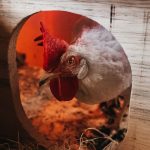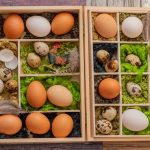Justin Rhodes is a prominent advocate for sustainable farming and homesteading practices. He has established a significant online presence through his YouTube channel and website, where he shares educational content about regenerative agriculture and self-sufficient living. Rhodes resides with his family on a farm in North Carolina, implementing permaculture principles and raising livestock such as pigs and chickens.
His work focuses on promoting the advantages of sustainable farming methods and encouraging others to adopt a more land-connected lifestyle. Through his various platforms, Rhodes aims to educate and inspire individuals interested in pursuing similar agricultural and homesteading endeavors.
Table of Contents
Key Takeaways
- Justin Rhodes is a well-known homesteader and YouTuber who advocates for sustainable living and raising animals on his farm.
- Keeping pigs and chickens together has several benefits, including waste management, pest control, and mutual foraging.
- When housing pigs and chickens together, it’s important to provide separate shelters and feeding areas to prevent competition and aggression.
- Managing the health and safety of pigs and chickens involves regular monitoring, vaccination, and providing a clean living environment.
- Justin Rhodes emphasizes the importance of observing animal behavior and learning from the natural interactions between pigs and chickens for successful cohabitation.
Benefits of Keeping Pigs and Chickens Together
Harnessing Natural Behaviors
Pigs are natural foragers and can help to clear and prepare land for planting, while chickens are excellent at turning over soil and fertilizing it with their droppings. By allowing these two species to coexist, farmers can harness the natural behaviors of each animal to improve the health and productivity of their land. Additionally, pigs and chickens can also be fed a diet that includes food scraps and surplus produce from the farm, reducing waste and providing a valuable source of nutrition for the animals.
Benefits of Integration
This integrated approach to animal husbandry not only benefits the farm ecosystem but also provides a more sustainable and cost-effective way of raising livestock. The integration of pigs and chickens also offers a unique opportunity for farmers to diversify their products and increase their income.
Diversified Products and Increased Income
Pigs provide high-quality meat that is in demand by consumers who are looking for ethically raised, pasture-fed pork. Chickens, on the other hand, produce eggs that are a staple in many households. By raising both animals on the same farm, farmers can offer a wider range of products to their customers, increasing their potential for sales and revenue. Additionally, the manure produced by both pigs and chickens can be used to fertilize crops, further enhancing the overall productivity of the farm.
Housing and Feeding Considerations

When it comes to housing pigs and chickens together, there are a few important considerations to keep in mind. Pigs require sturdy housing that can withstand their natural tendency to root and dig, while chickens need secure coops that protect them from predators. Justin Rhodes has found success in using mobile housing systems for both pigs and chickens, allowing them to be moved around the farm to access fresh pasture and forage.
This not only provides a more natural environment for the animals but also helps to prevent overgrazing and soil compaction in any one area. By rotating the animals through different sections of the farm, Justin is able to improve soil health and maximize the use of available pasture. In terms of feeding, both pigs and chickens can benefit from a diet that includes a variety of foods.
Pigs are omnivores and can thrive on a diet that includes grains, fruits, vegetables, and even dairy products. Chickens are also omnivorous and enjoy a diet that includes grains, seeds, insects, and kitchen scraps. By feeding both animals a diverse diet that includes surplus produce from the farm, Justin is able to reduce feed costs while providing high-quality nutrition for his livestock.
Additionally, allowing pigs and chickens to forage for insects and other natural foods helps to mimic their natural behaviors and improve their overall health and well-being.
Managing Health and Safety
Managing the health and safety of pigs and chickens on the farm is a top priority for Justin Rhodes. One important aspect of this is ensuring that the animals have access to clean water at all times. Pigs require a large amount of water for drinking and cooling themselves, while chickens need water for drinking and bathing.
Justin has implemented systems for providing fresh water to both species, including automatic waterers that can be easily refilled as needed. This helps to ensure that the animals stay hydrated and healthy, even during hot weather. Another important aspect of managing health and safety is preventing the spread of disease between pigs and chickens.
While both species can coexist peacefully, it’s important to take precautions to minimize the risk of disease transmission. Justin practices good biosecurity measures on his farm, including regular cleaning and disinfection of housing areas, as well as monitoring the health of his animals closely. By staying vigilant and proactive about animal health, Justin is able to minimize the risk of illness and ensure that his pigs and chickens thrive in a safe and healthy environment.
Observations and Lessons Learned
Through his experience raising pigs and chickens together, Justin Rhodes has made several key observations and learned valuable lessons about integrated animal husbandry. One important observation is the positive impact that pigs can have on pasture land. Pigs are natural foragers and can help to clear overgrown areas, root up weeds, and prepare land for planting.
By allowing pigs to graze in certain areas of the farm, Justin has seen improvements in pasture quality and increased biodiversity in plant species. This not only benefits the pigs themselves but also contributes to the overall health of the farm ecosystem. Another lesson learned is the importance of providing ample space for both pigs and chickens to exhibit natural behaviors.
Pigs need space to root and wallow in mud, while chickens need space to scratch for insects and dust bathe. By providing ample room for both species to express these natural behaviors, Justin has seen improvements in animal welfare and overall health. This has also contributed to a more harmonious coexistence between pigs and chickens, as each species is able to fulfill its natural instincts without competing for resources.
Tips for Success

Start Small and Scale Up
When it comes to raising pigs and chickens together, it’s essential to start small and gradually expand as you gain experience. Raising multiple species of animals together can be complex, so it’s crucial to begin with a manageable number of animals before scaling up. This approach allows you to learn about the specific needs and behaviors of each species before taking on larger numbers.
Prioritize Animal Welfare
Prioritizing animal welfare is vital for creating a sustainable and harmonious farming system. This can be achieved by providing ample space, access to fresh pasture, and a diverse diet. By focusing on the well-being of your animals, you can create a system that benefits both the animals and the land.
Good Record-Keeping and Observation
Good record-keeping and observation are critical components of successful multi-species farming. By keeping detailed records of animal health, behavior, and productivity, you can identify patterns and make informed decisions about managing your livestock. This approach enables you to refine your farming practices and make data-driven decisions to improve your operation.
Conclusion and Final Thoughts
In conclusion, raising pigs and chickens together offers numerous benefits for sustainable farming operations. By harnessing the natural behaviors of each species, farmers like Justin Rhodes are able to create integrated systems that improve soil health, reduce waste, and increase productivity. Through careful management of housing, feeding, health, and safety considerations, it is possible to create a harmonious coexistence between pigs and chickens that benefits both the animals and the land.
As interest in sustainable farming continues to grow, it’s likely that more farmers will look to integrate different species of livestock in their operations. By learning from experienced farmers like Justin Rhodes and implementing best practices for integrated animal husbandry, it is possible to create more resilient and regenerative agricultural systems that benefit both people and the planet.
If you’re interested in learning more about keeping pigs and chickens together, you might also want to check out this article on whether geese can eat chicken feed. It provides valuable information on how different types of poultry can coexist and share resources on a farm.
FAQs
What are the benefits of keeping pigs and chickens together?
Keeping pigs and chickens together can provide several benefits, such as efficient waste management, increased soil fertility, and reduced pest populations. Pigs can help to break down and consume food scraps and other organic waste, while chickens can scratch and peck at the ground, spreading the pig manure and aerating the soil.
Are there any potential drawbacks to keeping pigs and chickens together?
While there are benefits to keeping pigs and chickens together, there are also potential drawbacks to consider. Pigs can be aggressive towards chickens, especially if they are not properly managed or if there is limited space. Additionally, pigs may compete with chickens for food, so it’s important to provide separate feeding areas to prevent conflict.
What should be considered when planning to keep pigs and chickens together?
When planning to keep pigs and chickens together, it’s important to consider the space requirements for each animal, as well as their individual needs for shelter, food, and water. Proper fencing and housing should be in place to ensure the safety and well-being of both pigs and chickens. Additionally, regular monitoring and observation of the animals’ behavior is essential to address any potential issues that may arise.
How can pigs and chickens be managed together to ensure their well-being?
To ensure the well-being of both pigs and chickens when kept together, it’s important to provide adequate space, shelter, and access to food and water for each animal. Proper management practices, such as regular cleaning of living areas and monitoring of animal behavior, can help prevent conflicts and ensure a harmonious coexistence between pigs and chickens. Additionally, providing enrichment activities and opportunities for natural behaviors can contribute to the overall welfare of the animals.
Meet Walter, the feathered-friend fanatic of Florida! Nestled in the sunshine state, Walter struts through life with his feathered companions, clucking his way to happiness. With a coop that’s fancier than a five-star hotel, he’s the Don Juan of the chicken world. When he’s not teaching his hens to do the cha-cha, you’ll find him in a heated debate with his prized rooster, Sir Clucks-a-Lot. Walter’s poultry passion is no yolk; he’s the sunny-side-up guy you never knew you needed in your flock of friends!







